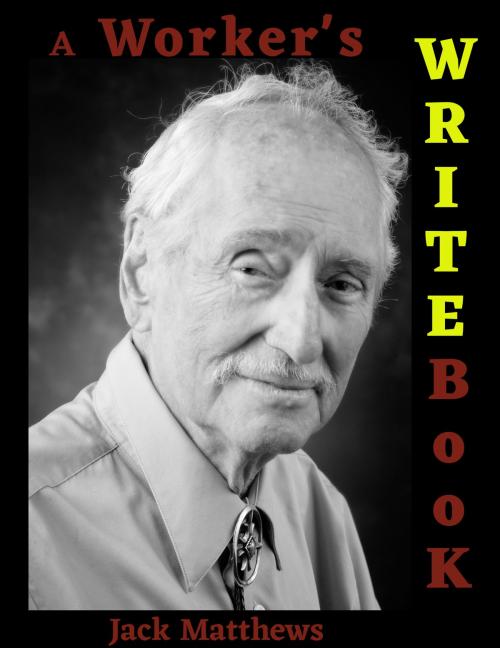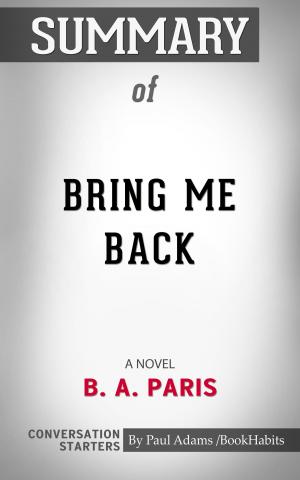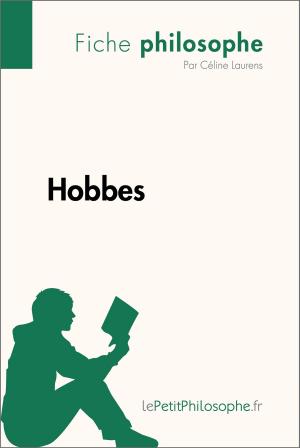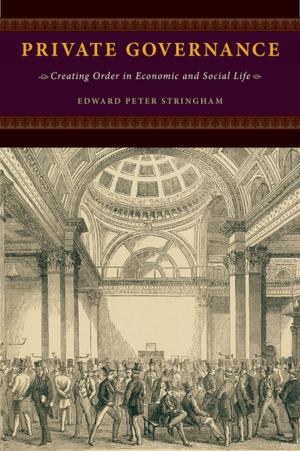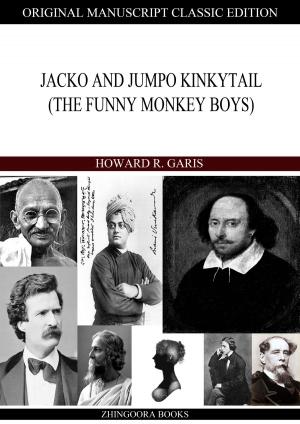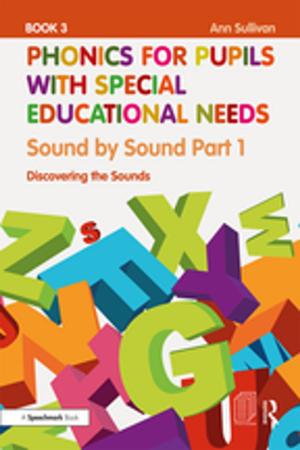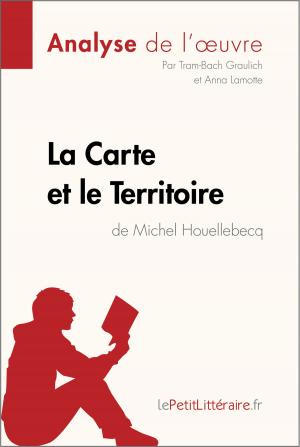A Worker's Writebook: How Language Makes Stories
Nonfiction, Reference & Language, Language Arts, Writing & Publishing, Writing Skills, Composition & Creative Writing, Reference| Author: | Jack Matthews | ISBN: | 9780463916681 |
| Publisher: | Personville Press | Publication: | March 12, 2019 |
| Imprint: | Smashwords Edition | Language: | English |
| Author: | Jack Matthews |
| ISBN: | 9780463916681 |
| Publisher: | Personville Press |
| Publication: | March 12, 2019 |
| Imprint: | Smashwords Edition |
| Language: | English |
For several decades Jack Matthews distributed a photocopied version of this guide to students in his fiction writing classes at Ohio University. A Worker's Writebook offers insight about how successful writers mold raw experiences into a story and how language helps you to do that. It offers good examples and practical advice for getting a story idea off the ground; it analyzes several stories (including one of Matthews’ own) and offers paradigms for understanding how stories work. Erudite, witty, idiosyncratic, serendipitous, mischievous, sesquipedalian, entertaining, introspective and colorful: these are adjectives which come to mind when reading this book.
The book consists of essays and dialogue (called interludes). These interludes punch holes in the rules and pronouncements made in the essays; they also help the book avoid seeming too dogmatic. The two voices in the interludes are not exactly "characters" but the author and a contrarian voice within the author. The comparison to Platonic dialogues is apt; Matthews received his undergraduate degree in classical Greek literature and has always found echoes of the classical age in contemporary art and life. Still, the "poetics" of Writebook is grounded less in Aristotle than Aristophanes.
Although Writebook touches upon practical aspects of writing fiction (such as naming characters and writing speech cues), it focuses on helping the writer to write more boldly and with more attention to the linguistic vehicles of thought. For Matthews, most stories fail through under-invention, not because the rules of narrative have been disregarded.
Chapter 2 (Taxonomies) and 3 (Structural Matters) cover paradigms for plot and character development. These are worthy subjects and Matthews has interesting things to say (especially when he tries to analyze his story Funeral Plots with these same paradigms). At the same time Matthews recognizes that there is no magic paradigm or archetype capable of explaining what makes all stories successful – these are just guides. At some point you just have to trust writerly intuition. Writebook helps the potential storyteller to cultivate this intuition and be flexible enough to bend rules when necessary. Matthews writes, "Anything can be done if it's done in the right way: with style, panache and cunning." At another time, he wrote, "Literature is the least pure of all the arts, and that is its richness and power. It's a temporal art like a symphony; it has periodicities, it has rhythms - prose itself has sound, it evokes visual imagery like painting...."
Many writing books include a chapter or two listing literary cliches to avoid. For the most part, Writebook doesn't do that. Instead it goes deeper and analyzes why some metaphors succeed and others do not. The funny "Parable of the Indifferent Ear" provides a good case study about how linguistic inventiveness doesn't always translate into effective writing.
Literary insights from Writebook can be applied to drama, novels and poetry; but they are especially applicable to smaller forms like the short story (though Matthews' claim that a short story of more than 10,000 words rarely succeeds is sure to be controversial).
Writebook introduces lots of new ideas and terminology: the non-sequential time opening, the Swamps of Antecedence, pointedness (which is how stories gain enough momentum to escape the gravitational pull of the author), linguistic vehicles (the actual words which transport the thought) and why flat characters aren't always bad.
"Mr. Matthews is a master of prose conversation and deadpan charm. He is ironic, cool, and shrewd, and he writes a lucid prose." (Tom O'Brien, NEW YORK TIMES)
"Matthews' always graceful prose finds that precise telling detail. It's easy to fall in love with such writing." (Perry Glasser, NORTH AMERICAN REVIEW)
For several decades Jack Matthews distributed a photocopied version of this guide to students in his fiction writing classes at Ohio University. A Worker's Writebook offers insight about how successful writers mold raw experiences into a story and how language helps you to do that. It offers good examples and practical advice for getting a story idea off the ground; it analyzes several stories (including one of Matthews’ own) and offers paradigms for understanding how stories work. Erudite, witty, idiosyncratic, serendipitous, mischievous, sesquipedalian, entertaining, introspective and colorful: these are adjectives which come to mind when reading this book.
The book consists of essays and dialogue (called interludes). These interludes punch holes in the rules and pronouncements made in the essays; they also help the book avoid seeming too dogmatic. The two voices in the interludes are not exactly "characters" but the author and a contrarian voice within the author. The comparison to Platonic dialogues is apt; Matthews received his undergraduate degree in classical Greek literature and has always found echoes of the classical age in contemporary art and life. Still, the "poetics" of Writebook is grounded less in Aristotle than Aristophanes.
Although Writebook touches upon practical aspects of writing fiction (such as naming characters and writing speech cues), it focuses on helping the writer to write more boldly and with more attention to the linguistic vehicles of thought. For Matthews, most stories fail through under-invention, not because the rules of narrative have been disregarded.
Chapter 2 (Taxonomies) and 3 (Structural Matters) cover paradigms for plot and character development. These are worthy subjects and Matthews has interesting things to say (especially when he tries to analyze his story Funeral Plots with these same paradigms). At the same time Matthews recognizes that there is no magic paradigm or archetype capable of explaining what makes all stories successful – these are just guides. At some point you just have to trust writerly intuition. Writebook helps the potential storyteller to cultivate this intuition and be flexible enough to bend rules when necessary. Matthews writes, "Anything can be done if it's done in the right way: with style, panache and cunning." At another time, he wrote, "Literature is the least pure of all the arts, and that is its richness and power. It's a temporal art like a symphony; it has periodicities, it has rhythms - prose itself has sound, it evokes visual imagery like painting...."
Many writing books include a chapter or two listing literary cliches to avoid. For the most part, Writebook doesn't do that. Instead it goes deeper and analyzes why some metaphors succeed and others do not. The funny "Parable of the Indifferent Ear" provides a good case study about how linguistic inventiveness doesn't always translate into effective writing.
Literary insights from Writebook can be applied to drama, novels and poetry; but they are especially applicable to smaller forms like the short story (though Matthews' claim that a short story of more than 10,000 words rarely succeeds is sure to be controversial).
Writebook introduces lots of new ideas and terminology: the non-sequential time opening, the Swamps of Antecedence, pointedness (which is how stories gain enough momentum to escape the gravitational pull of the author), linguistic vehicles (the actual words which transport the thought) and why flat characters aren't always bad.
"Mr. Matthews is a master of prose conversation and deadpan charm. He is ironic, cool, and shrewd, and he writes a lucid prose." (Tom O'Brien, NEW YORK TIMES)
"Matthews' always graceful prose finds that precise telling detail. It's easy to fall in love with such writing." (Perry Glasser, NORTH AMERICAN REVIEW)
